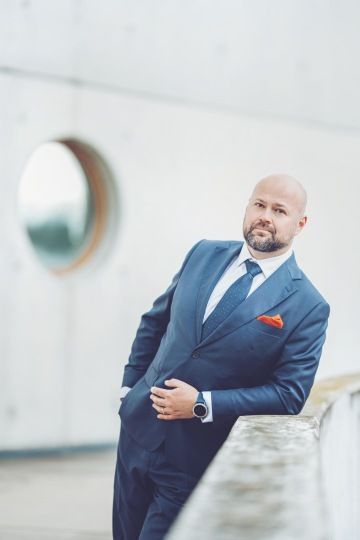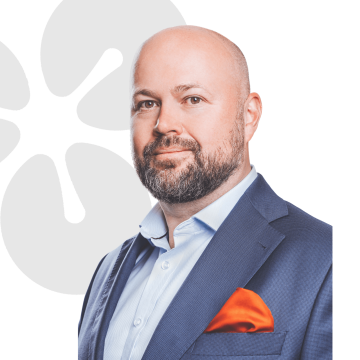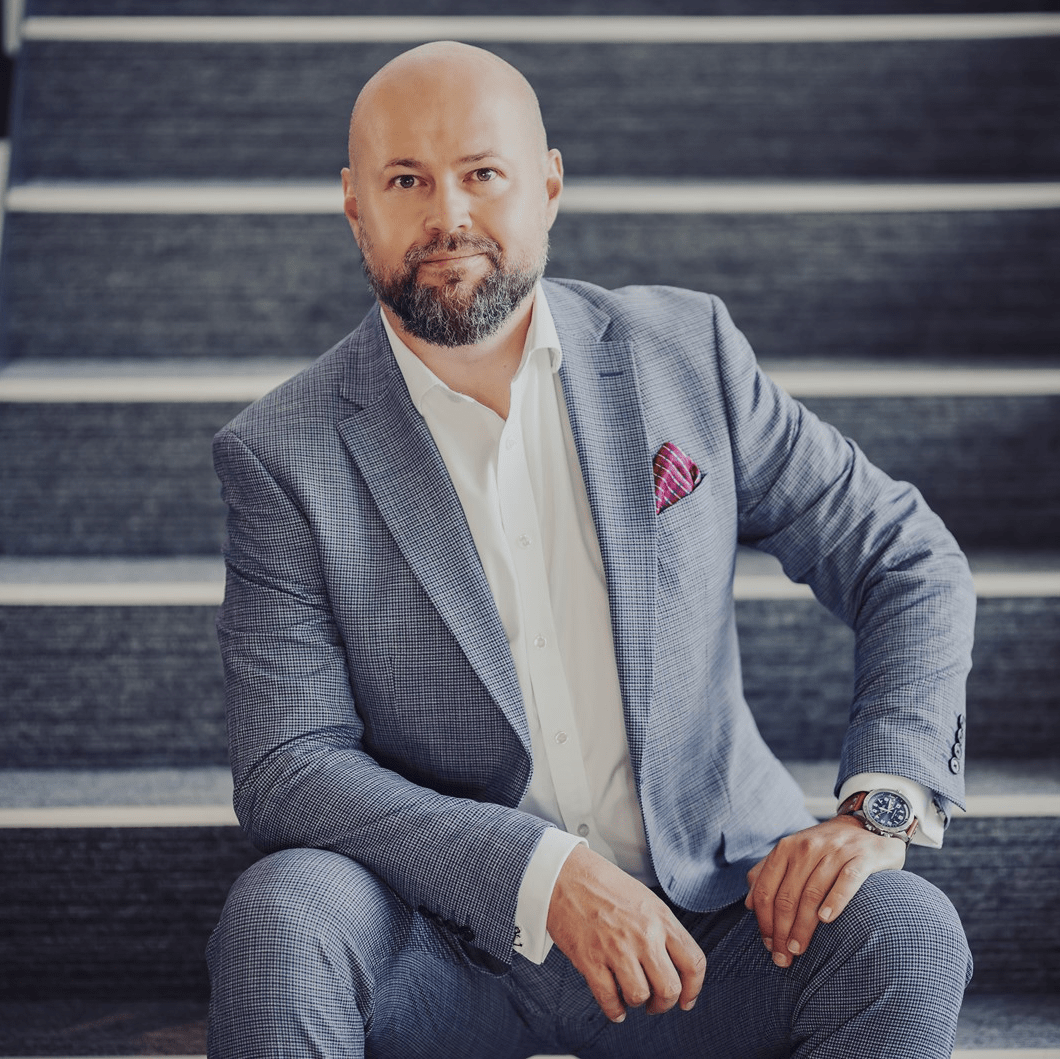Companies need smart, determined leaders

What Led You to Establish Flow-r Executive Search?
Before I started my own business, I worked in a top managerial position at a multinational company. At that time, I had eight direct and approximately 700 indirect subordinates across four European countries. However, I realized that the role of a manager did not suit me. I am not a leader in the true sense, like the captain of a boys' football team. Instead, I am a thoughtful, analytical introvert with a knack for people. The job of a top manager in a large company didn’t fit me, and I wanted to work in a smaller team of similar professionals, meet people who are exceptionally successful in their professions, and experience the adventure of discovering the unknown every day. I dare say that I have succeeded in fulfilling this.
Many People Don't Know What Headhunting and Executive Search Are. Could You Explain?
Headhunting, more commonly referred to as executive search, is a demanding discipline where you approach candidates in the market, often from the competition of your client, and through well-posed questions, you try to determine if there are so-called driving factors that would make them consider changing jobs. It is the royal discipline in recruitment, requiring a lot of experience from the headhunter, as well as broad knowledge, responsiveness, and empathy. Because this involves dozens and hundreds of hours over coffee with candidates, this methodology is also financially demanding and is therefore used mainly for top managerial or key specialist roles within a company.
So, Headhunting and Recruitment Are Not the Same?
Headhunting is a subset of recruitment. If I were to compare it to military terminology, a typical recruiter "sticks a machine gun over the trench and shoots towards the enemy, firing hundreds and thousands of bullets and occasionally hitting someone." A headhunter is more like a sniper, with a specific challenging and high-value target in mind. There is no room for mistakes, misunderstandings, or second attempts.
What Type of Clients Use Your Services Most Frequently?
It varies. About a third of our clients are family businesses where we work directly for the owners and often help find members of the company's top management or successors for the owners. Another third are multinational companies across Central Europe, where we help with key top managerial roles like CEO, CFO, CTO, etc. The last third is a mix; we have found the head of a prestigious dental clinic, a producer for director Jan Svěrák, the director of a private school... It’s really diverse work.
What Is Your Most Successful Project?
We have a success rate of 97% of our projects today, meaning the candidate we recommend is hired for the position and successfully acclimates there. But perhaps I would mention one of the most challenging projects.
We were looking for a candidate in Britain specializing in the research and development of transatlantic optical cable connectors. Basically, the speed of your internet depends on the quality of the optical fiber connection to the server, and about 80 people worldwide were engaged in this technology. We contacted all of them and managed to find a French specialist who had been working in India for a long time and wanted to return anywhere in Europe. Britain met his expectations, although he had a few humorous remarks about it.
More often, however, we fill top managerial positions within companies, where I enjoy the direct connection between the quality of the selected candidate and the progress the company subsequently experiences. It’s no wonder they say a fish rots from the head down, and we have replaced many such heads with fresh, smart, and successful candidates.
It’s a joy to watch from a distance as a client’s company flourishes, breathes new life, and expands. And of course, it’s great to hear praise from satisfied clients.
What Methods Do You Use to Find Ideal Candidates?
It varies. Today, there is a lot of emphasis on social networks and online searching in the industry. To a large extent, this works, but our biggest added value is in offline search. This methodology involves identifying specific industries and subsequently all companies where your candidate might be. It’s not just about competitors of the client, but often horizontally or vertically related businesses. Then you painstakingly add names to these companies that are in suitable positions and start approaching them directly, inviting them for coffee, lunch, or a beer. I’ve had meetings on the golf course, at the pool, or in the sauna. During COVID, I walked a lot with candidates in parks and drank liters of awful coffee at gas stations. We place great importance on personal meetings with candidates and clients; personal impressions, in my opinion, cannot yet be completely replaced digitally. And I must admit, our clients and candidates appreciate this.
Is That the End?
That’s just the beginning. When you meet dozens of candidates for a given project, carefully understand their motivations, experiences, and strengths, you then present a few of the most suitable and well-motivated candidates to the client. And here begins the second challenging part. If initially, it was difficult to turn over every stone and explore whether there was a hidden treasure under it, now we must ensure that during the courtship between the candidates and the client, there are no misunderstandings, miscommunications, or even mistakes. Both sides usually tread carefully, considering what and how to communicate, and we help both parties get to know each other well, not forget anything, and avoid mistakes. The whole process of candidate management and client management itself is not just for an article but for several books. Negotiating the offer, counter-offer from the current employer, the family's opinion on the career change, there are many pitfalls where the whole effort can collapse.
Does It End with Signing the Employment Contract?
Of course not, thanks for the pass. Signing the contract begins the wait for the candidate to finish their current job, then the start, onboarding, and support of both sides continues long after the cooperation between our client and the selected candidate begins.
How Long Does the Entire Process Take?
With us, the client always has it done within 6 to 8 weeks. Since we go to the entire market from the beginning and approach all candidates, there is not much room to prolong the project further. Our market search takes two weeks, another two weeks we meet with the candidates, the next two weeks the selected candidates meet with the client, and the last two weeks are reserved for additional rounds, case studies, negotiating the final offer, etc. We complete the vast majority of projects within 8 weeks.
What Are the Biggest Challenges in Your Work?
On our end, from the headhunter’s perspective, it’s resistance to rejection. Statistically, 9 out of 10 candidates we approach are satisfied in their current position and are not considering a change. Still, they need to be given the same effort as those who are considering a change because you never know who might be in a so-called internal resignation.
What Is Internal Resignation?
It’s a situation where an employee/candidate is dissatisfied with their current role, internally decided to change but hasn’t realized it yet. These are our most successful and common finalists. By approaching them and working well with the candidate, we can bring their internal decision to the conscious level and speed it up by about 6-12 months.
Is There Anything Else That’s a Big Challenge?
For me, the challenge and opportunity is the enormous diversity of projects and people. Every project is from a different business; you have to study a vast amount of information to be at least somewhat a partner in conversations with the client and candidate, to know what to ask and what’s important. The ability to quickly absorb, understand, and use a huge volume of new information is crucial. However, this is what I and others in our company enjoy, as we probably wouldn’t be able to do stereotypical work.
How Has the Job Market Changed Over the Last Five Years?
It depends on whom you ask. Some would say it has changed radically, with a significant shift towards flexibility and home office post-COVID. Others would say that workers’ motivations are changing sharply, work-life balance is no longer a cliché and is becoming substantial and important. We increasingly encounter topics of diversity, and there’s a lot of discussion about AI and its application.
From my personal perspective, not much has changed. Companies still need smart, determined leaders at their helm who will seize opportunities and lead the company to further success. This has been true, is true, and I think will continue to be true. And you won’t find this on paper in a CV or in a social media database; you recognize this after two hours of conversation with a person face to face, whether over coffee or with a towel around the waist in a sauna. The instinct and talent to recognize personal qualities of an individual cannot yet be replaced by a machine, so for me, everything remains the same.
That’s a Good Conclusion, Thanks for the Interview.
Thank you, too.
The interview was conducted between Libor Jarolím, managing director of Moonshot.cz, and Pavel Plachý, managing partner of Flow-r Executive Search.

Pavel Plachý is the founder of Flow-r Executive Search. He began his career in business intelligence, working for both Czech and multinational companies in the Czech Republic, Slovakia, and the United Kingdom. He has also held international top management roles, leading teams in three countries with a total of more than 700 employees.
In 2008, he founded his own company focused on finding strategic candidates and, since then, he and his colleagues have been dedicated to executive search. They find top managers and strategic experts for their clients.
